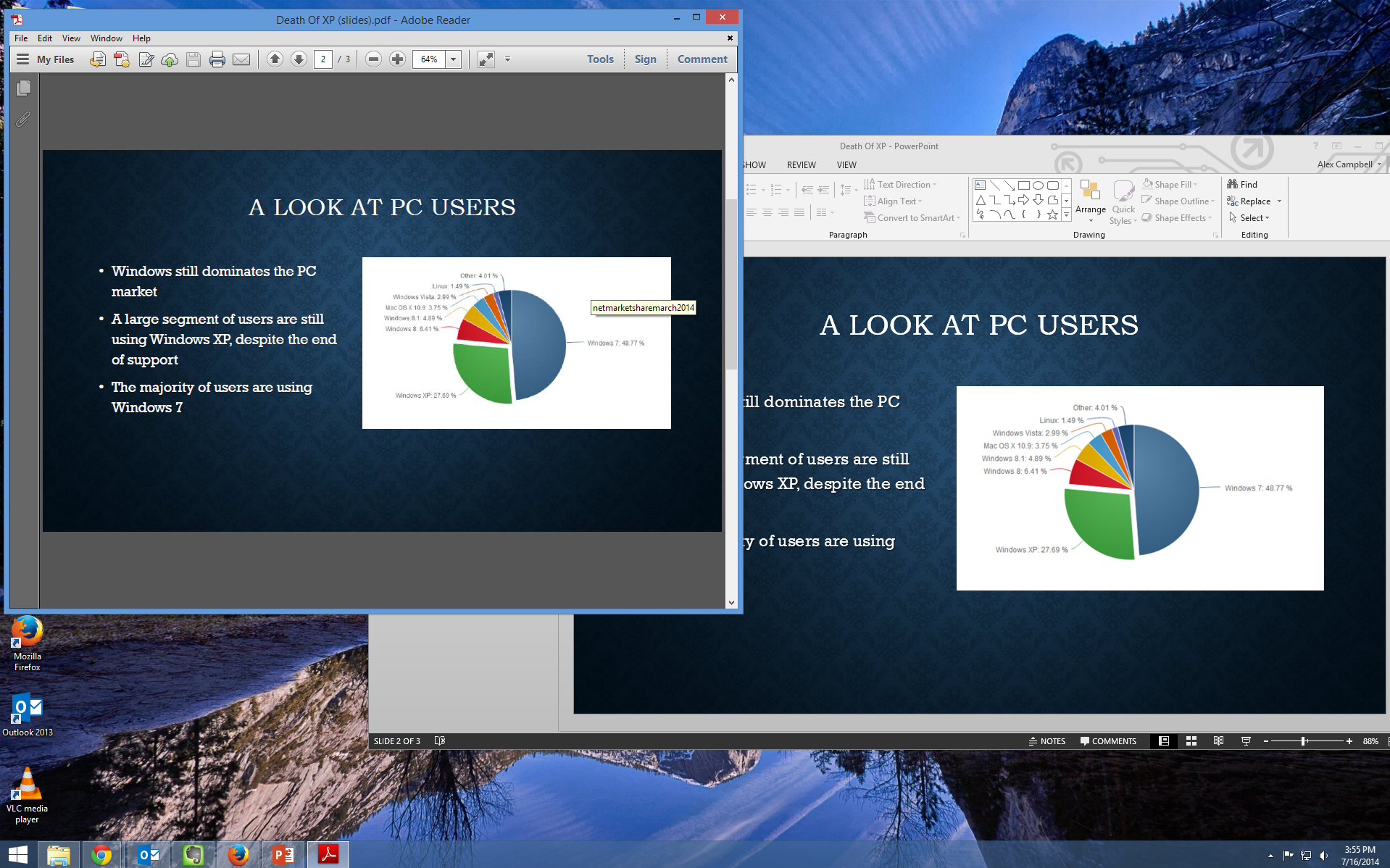- Shows you how to make the Resolution size bigger in Power Point on a Mac only. Step by step screen instructions.
- Sep 19, 2013 Change Resolution Size in Powerpoint on a Mac Abby Corcoran. Saving PowerPoint Slides as Images (Mac Version). How to Export High Resolution Images from PowerPoint - Duration.
- Mar 29, 2019 Powerpoint allows you to save your presentation as other file types including the ability to save each slide as a JPEG file on both Windows and Macintosh versions. This is useful if you do not have access to the Powerpoint application on a different computer you are giving a presentation on.
- By default, the export resolution of a PowerPoint slide that you want to save as a picture is 96 dots per inch (dpi). To change the export resolution, follow these steps: Exit all Windows-based programs.
When I take a Keynote (5.3 or 6.0) presentation with images (all pasted PDF files), then export the presentation to a PowerPoint presentation, all of the images become severely degraded. For reference, the original PDf files are on the order of 100KB, so I don't believe they are particularly large Is there a way to change this behavior?
If you need to output your PowerPoint at high resolution you can change the TIFF export quality to 300DPI with a simply Registry modification.
How To Set PowerPoint To Export High Res TIFFs:

- You do NOT need to close PowerPoint before you make this change.
- Open RegEdit.exe
- Expand HKEY_CURRENT_USERSoftwareMicrosoftOffice<###>PowerPointOptions
- Select EDIT > NEW and click DWORD Value.
- Type ExportBitmapResolution and press ENTER
- Click on ExportBitmapResolution, then select EDIT > MODIFY
- In the Value data box, type 300, select Decimal, and then click OK.
- Click File > Exit

In PowerPoint you can now, FILE > SAVE AS > change SAVE AS TYPE to TIFF and you will see that the result is 300DPI graphics.
PDF (Portable Document Format) files are (in many respects) perfect for exchanging documents that don’t need to be changed after the fact. Hence, often it makes sense to export PDF files from Microsoft Office (e.g. Word or PowerPoint) in order to make them available for others. Just think of presentation slides or handouts that you want to put online.
Unfortunately, the default settings of Microsoft Office (as far as I know in all versions) produce rather unimpressive results when it comes to images. The following example shows exported PDF versions of a cat photograph with various settings.
The top left image is a screenshot directly from PowerPoint 2016. On the top right, we can see a PDF export from PowerPoint with default settings. As you can see, this is rather terrible. Often, especially with smaller logos or background images, the compression artifacts are hard to spot on first glance. However, once you’ve spotted them, they really spoil an otherwise beautiful PDF export. The bottom left and right examples are exports from PowerPoint 2016 (print settings) and Adobe Acrobat DC respectively.
If file size (high fidelity PDFs are much larger) is not really an issue for you, it seems reasonable to just change the defaults setting in PowerPoint and Word. This can be done in the Officeoptions menu. Unfortunately, you have to do this for all Office products individually. In the following example, I have changed the default resolution to ‘High fidelity’ - the highest setting available. This alone will drastically improve the quality of your PDF files. If you choose to select ‘Do not compress image files,’ Office will ignore the ‘default resolution’ and just use the original image file’s resolution.
Adobe Acrobat (DC) Pro
However, while both the print version and the Adobe version look fine, Adobe Acrobat handles such things as transparency much better1. If you are working with complex images, transparent images, or extremely large files, Adobe Acrobat (DC) is generally advisable - despite its high cost. In this regard it is important to note that the newer versions of Microsoft Office, such as 2016, are only really compatible with the DC version of Acrobat, not X or XI.
If you are using Acrobat Pro (or rather Adobe PDFMaker) , make sure to also change its default setting to a higher resolution (in this case ‘High Quality Print’). Go to Preferences and then change the Conversion Settings:
The last important thing to remember is that the PDF/A format (designed for long-term archival) is not compatible with transparent images. If you export those using PDF/A settings, they will just appear slightly darker than the original transparent one.
Using a PDF Printer Driver
If you cannot (or don’t want to) afford Adobe Acrobat, there are various PDF printer drivers that can be used to create PDFs from anything that can be printed. They often support more features than the plain Microsoft Office export module. The most prominent one probably is pdfforge’s PDFCreator. It’s free and also (for the most part) open source. However, the software has received some criticism for including unwanted software (and even malware) in their installer. While this seems to have been resolved, be careful!
Linux and Headless Conversion

If you are on Linux and have to convert Microsoft Office files to PDF, OpenOffice/LibreOffice seem to work best. LibreOffice even supports a very useful headless mode than can be used from the console:
apt-get install libreoffice-common
libreoffice --headless --convert-to pdf document.docx --outdir pdf
How To Change Export Resolution Of Powerpoint Slide For Mac 2017
On a Mac (and Windows), the same thing should work with soffice (the LibreOffice executable) instead of of libreoffice.
How To Change Export Resolution Of Powerpoint Slide For Mac Windows 7
According to Arminator (see comments), it is advisable to use the native PDF export when working with transparency generated by using PowerPoint effects (e.g., “Glow”). ↩